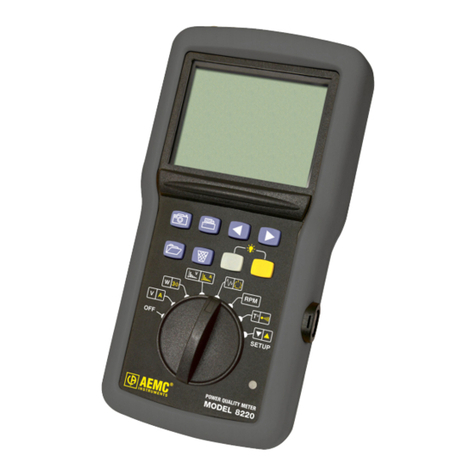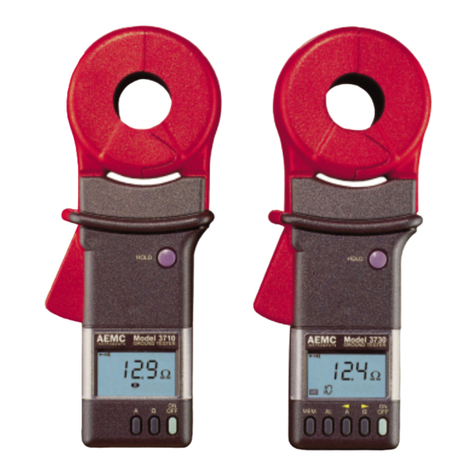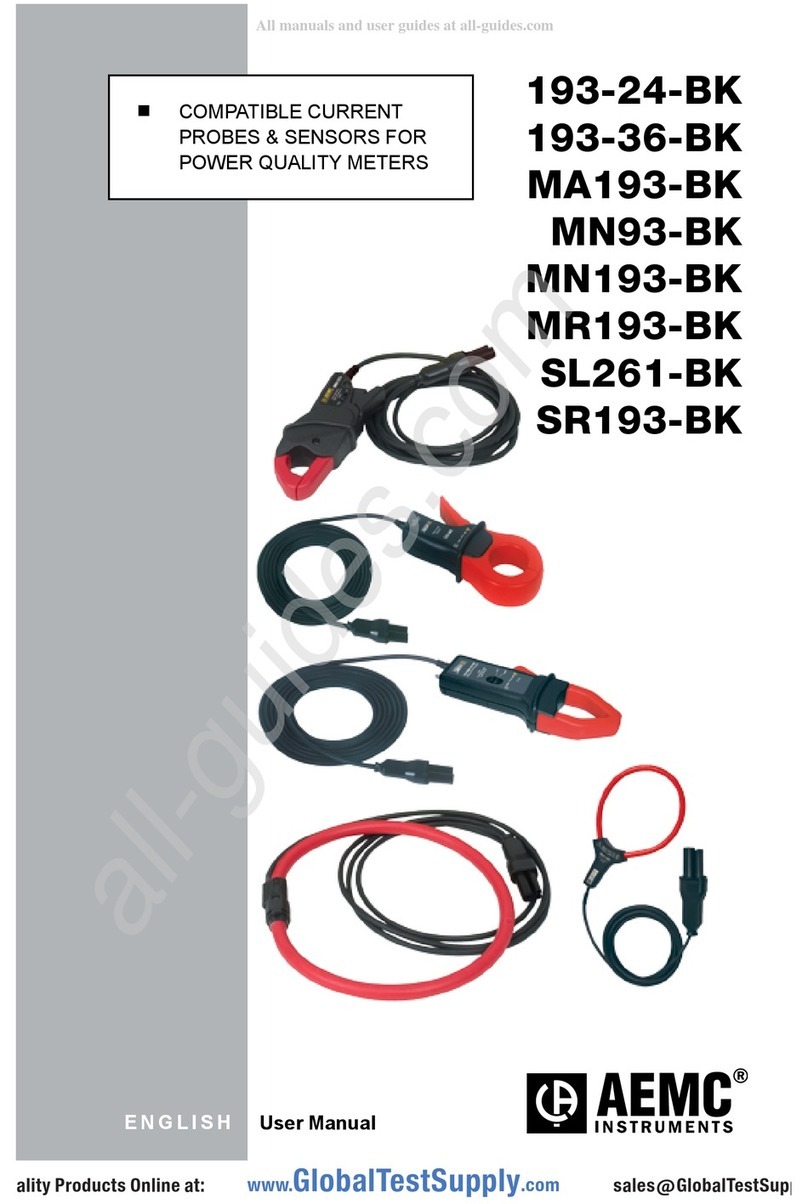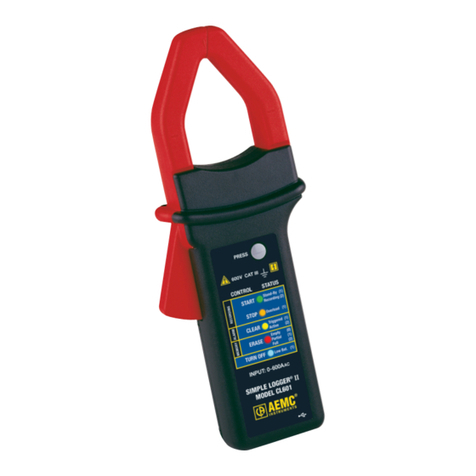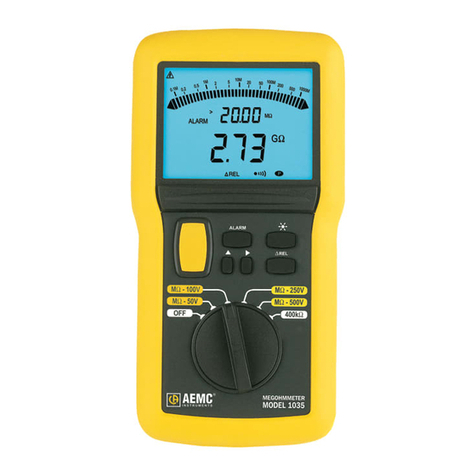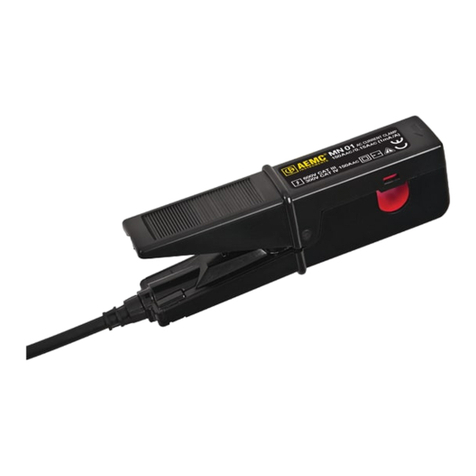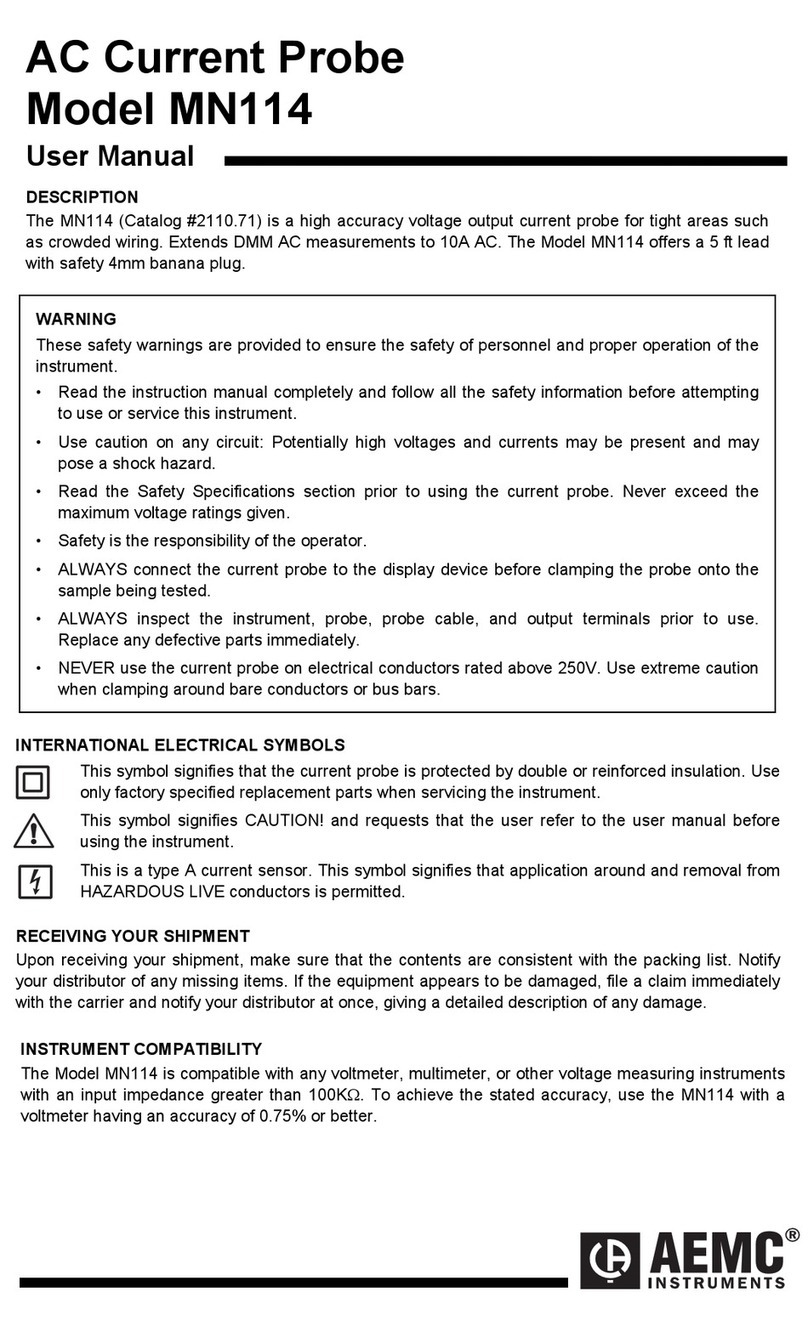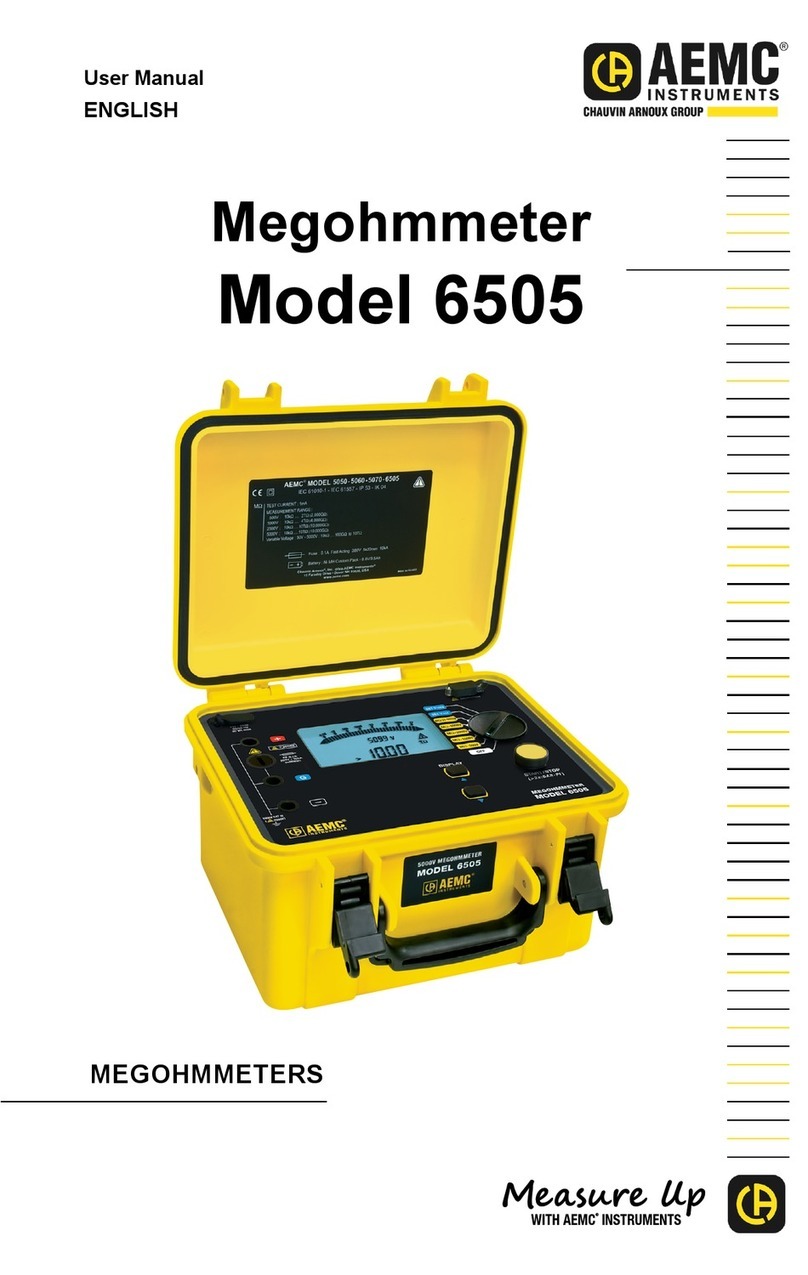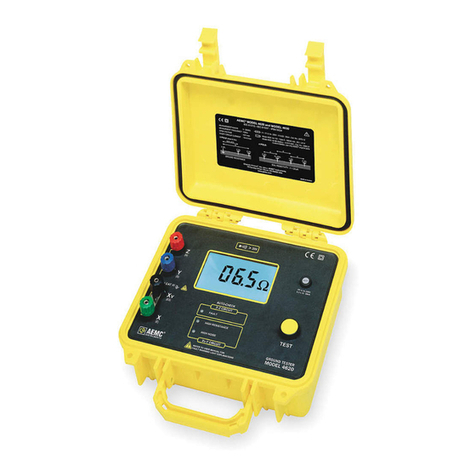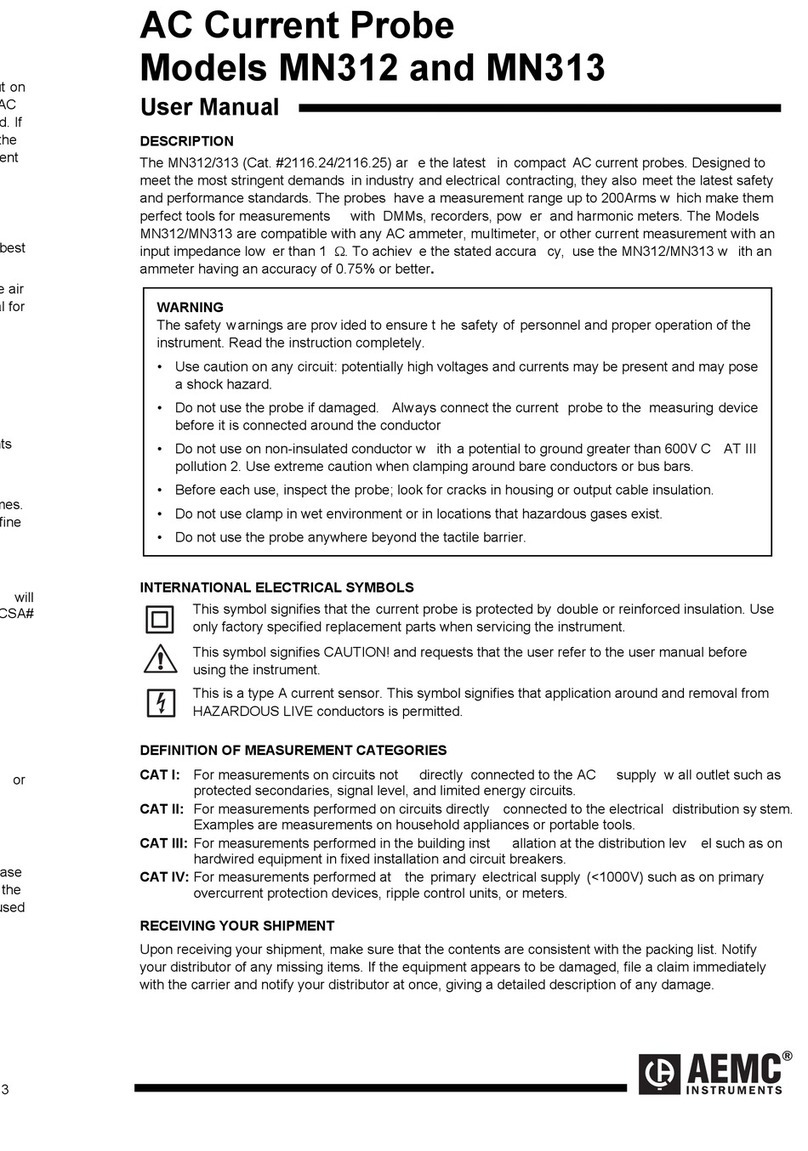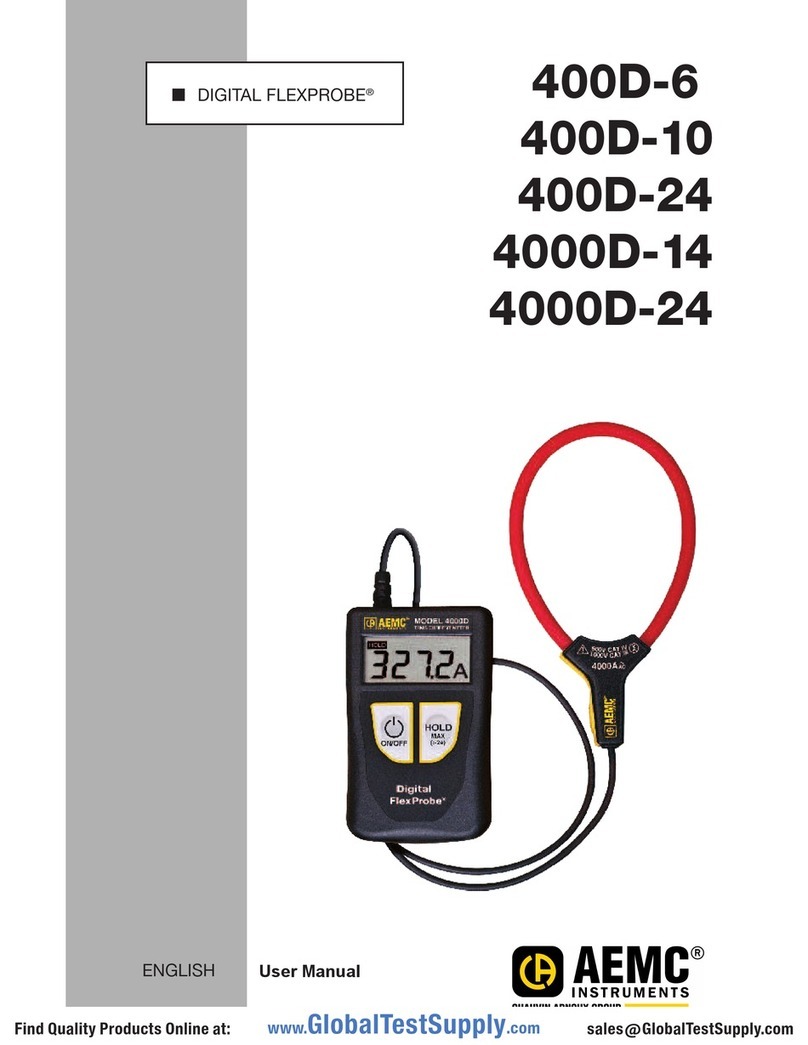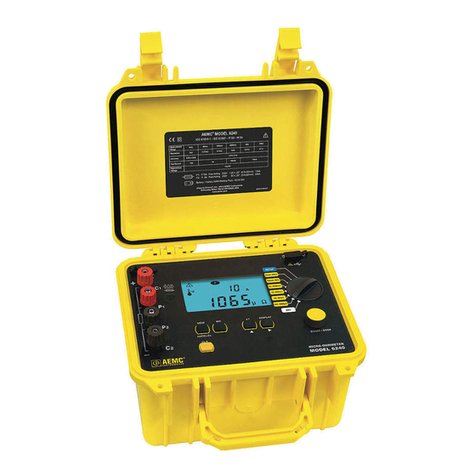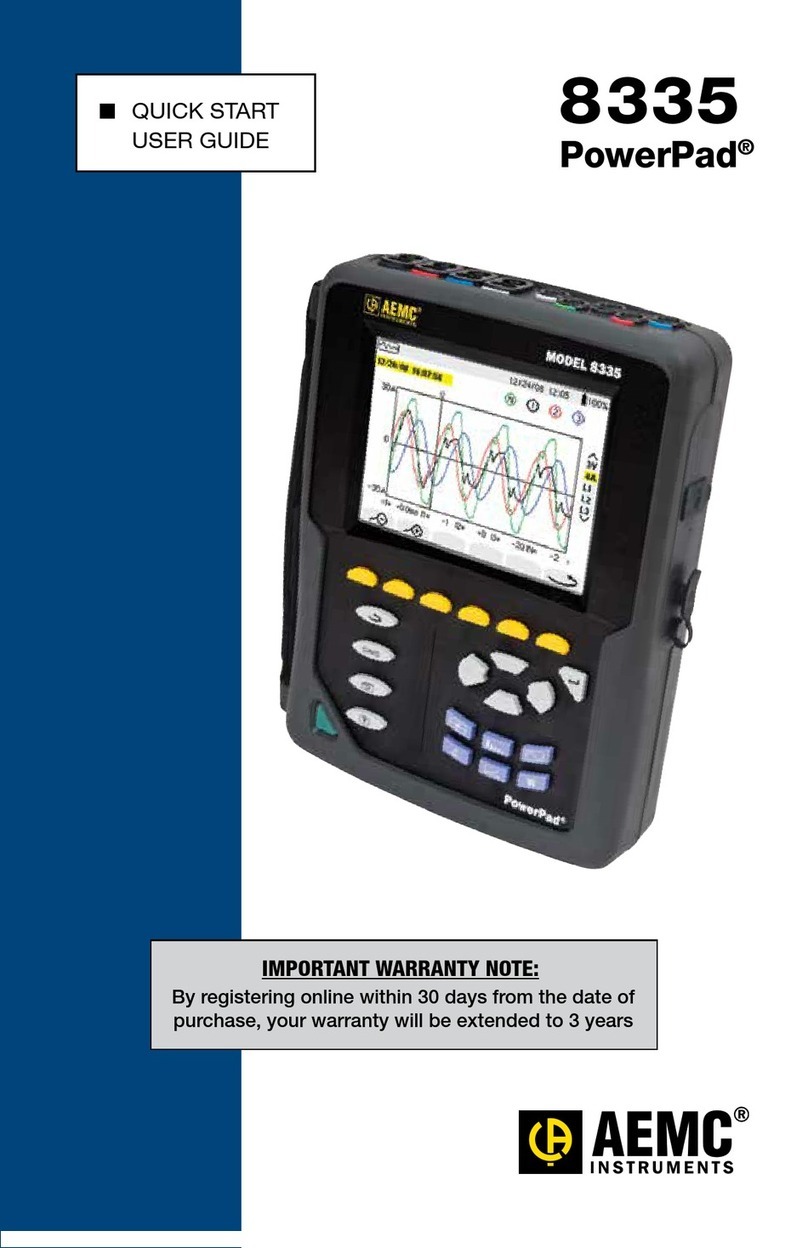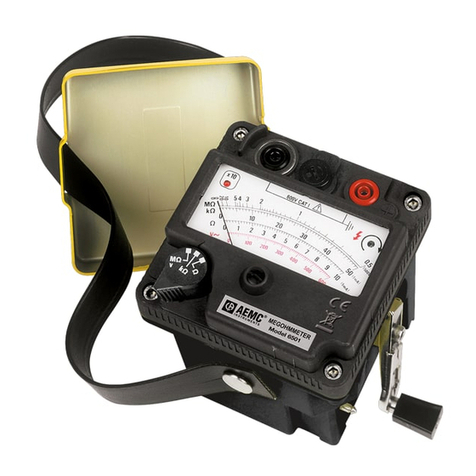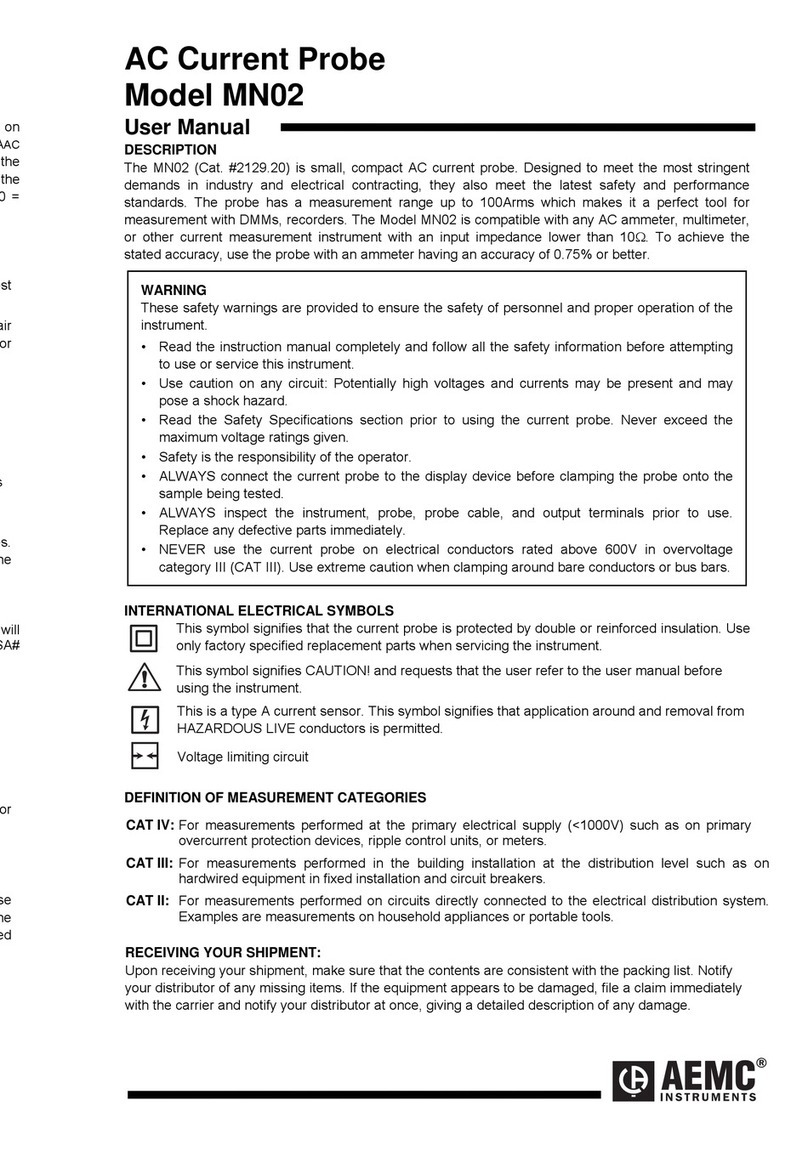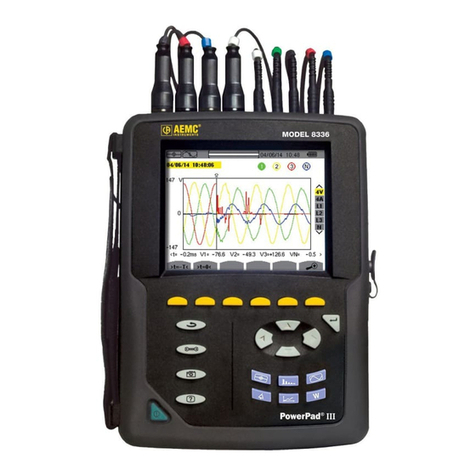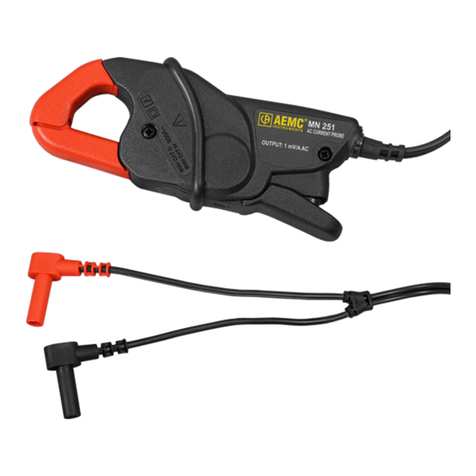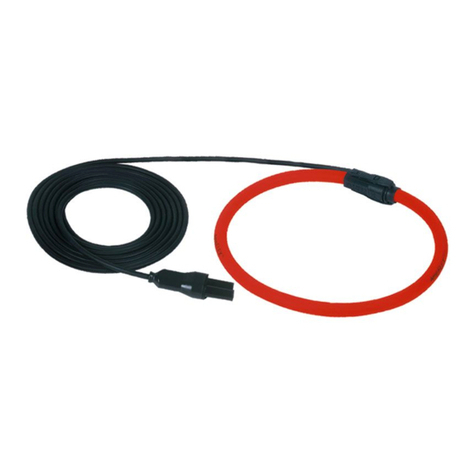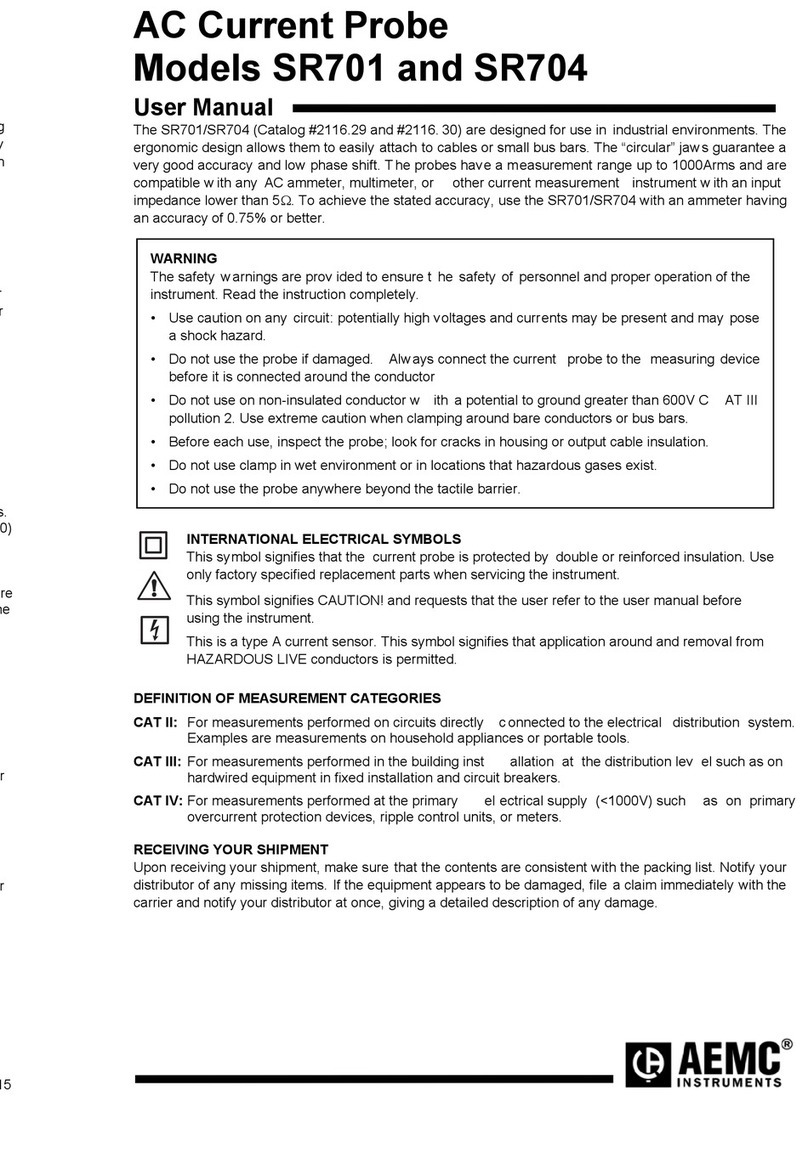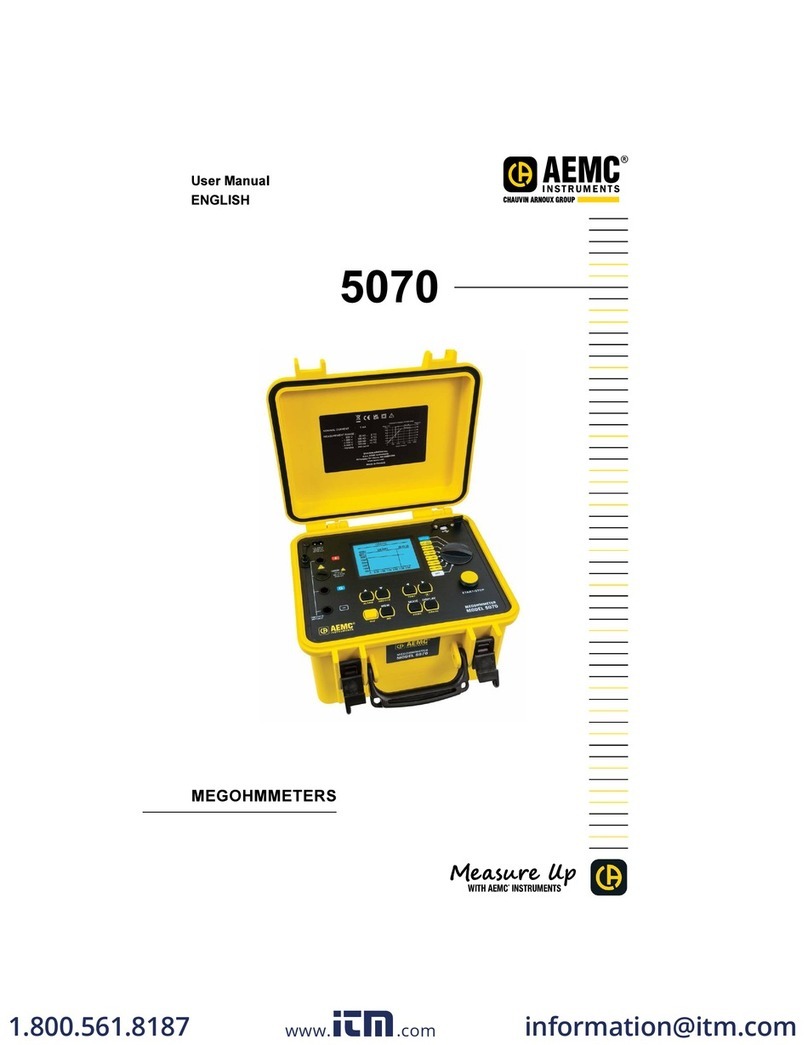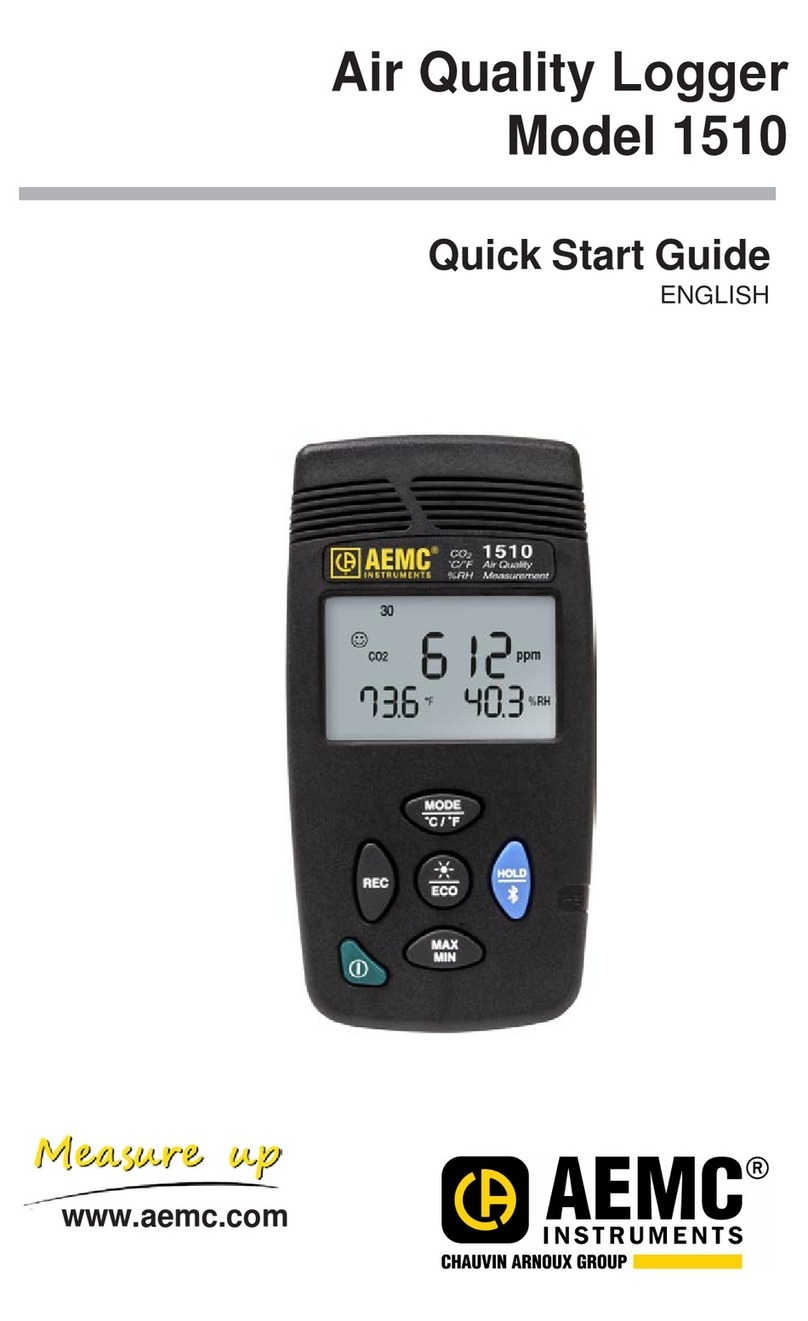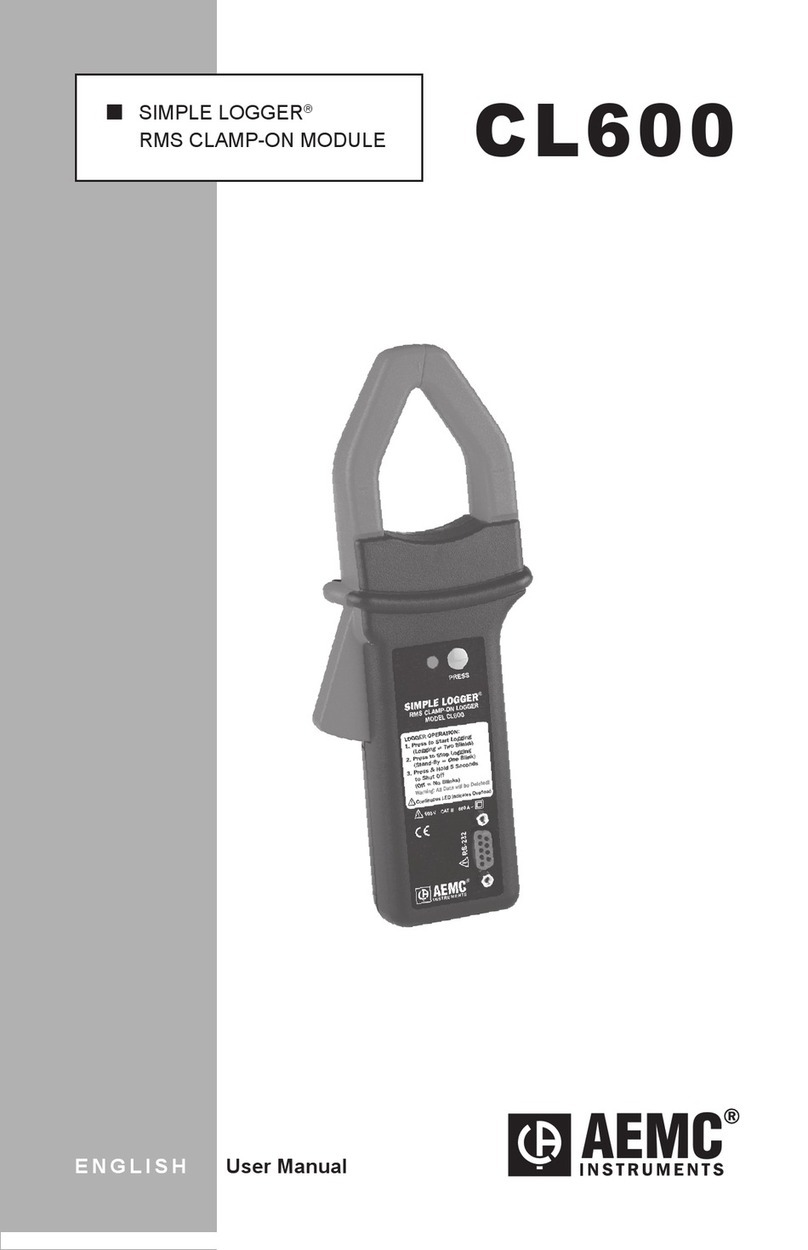
Megohmmeter Model 1000N/1100N
- 5 -
0(*2+00(7(502'(/1
5HFHL LQJ<RXU6KLSPHQW
Upon receiving your shipment, make sure that the contents are
consistent with the packing list. Notify your distributor of any missing
items. If the equipment appears to be damaged, file a claim immediately
with the carrier and notify your distributor at once, giving a detailed
description of any damage.
3DFNDJLQJ
The Megohmmeter Model 1000N (Cat. #185.100) is shipped with eight
1.5V “AA” batteries, two color-coded safety leads with insulated alligator
clips, a separate shielded lead, a separate insulated alligator clip, test
probe, one spare fuse, carrying case and instruction manual.
$FFHVVRULHVDQG5HSODFHPHQW3DUWV
AC power supply module with line cord and plug for
switch-selectable 110/220VAC at 47 to 400Hz.....................Cat. #100.142
Protective rubber case with handle......................................Cat. #2980.02
Rugged plastic carrying case, 19 x 14 x 7" ..........................Cat. #2118.07
Fuse, set of five, 0.1A slow-blow for AC supply module......Cat. #100.438
Fuse, set of one, 0.3A, for Model 1000................................Cat. #100.429
One test probe and one insulated alligator clip....................Cat. #100.404
Replacement leads for Models 1000N/1100N/5000N..........Cat. #1017.23
7-pin shielded lead, 10 ft, for Models 1000N/5000N/5100...Cat. #2950.10
Replacement Leads for Model 1000
Coaxial shielded lead ...........................................................Cat. #100.439
Set of leads: one coaxial shielded lead, pair of
safety leads, alligator clip, and test probe............................Cat. #100.482












